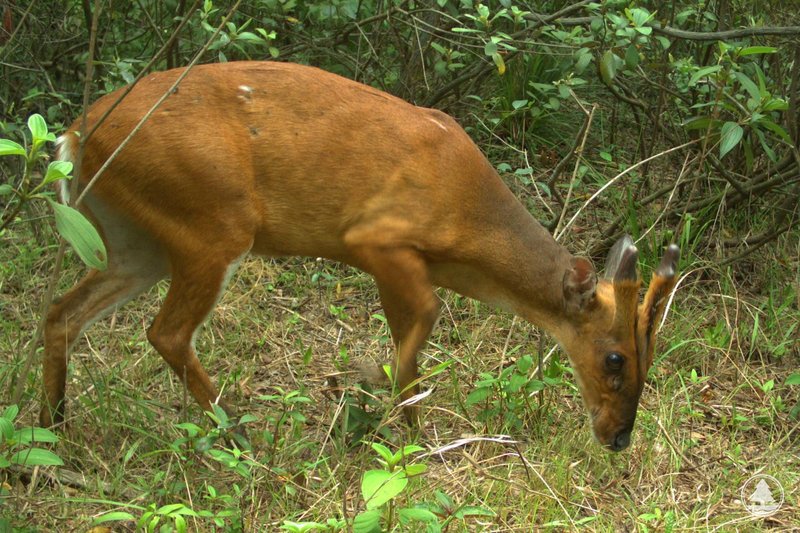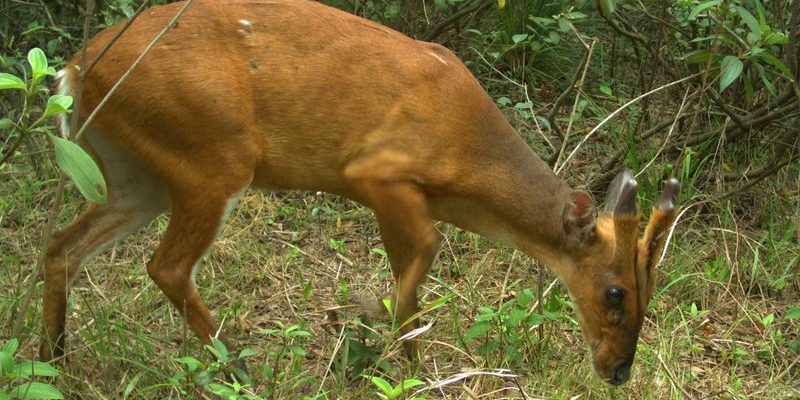
Muntjacs, often called barking deer, are small deer native to the forests of Asia. They’re known for their unique vocalizations, which sound a bit like a dog barking. Imagine walking through a thick forest when suddenly, you hear a sound that surprises you—it’s not a dog, but a muntjac! These creatures aren’t just cute; there’s a lot to learn about them. From their peculiar behaviors to their differing species, the world of muntjacs is both fascinating and diverse.
With their short legs, stocky bodies, and big ears, muntjacs can be quite charming to observe. They usually stand about 30 to 40 inches tall at the shoulder. Despite their small size, they have a significant presence in their habitats. Muntjacs are primarily nocturnal, meaning they’re most active during twilight and night, which makes spotting them in the wild a delightful challenge.
Unlike many deer, which are shy and skittish, muntjacs can be relatively bold and curious. This intriguing mix of behavior and appearance makes them a subject of interest for wildlife enthusiasts and researchers alike.
Physical Characteristics of Muntjacs
The physical features of muntjacs are as unique as their behaviors. They have a stocky build, which is quite different from the slender appearance you might expect from other deer species. Muntjacs display a range of coat colors, from reddish-brown to gray, often with lighter underbellies. One of the most striking features is their large, expressive eyes that give them a gentle demeanor.
Their antlers are another fascinating aspect. Male muntjacs grow antlers that can reach about 8 inches long and are shed annually. Unlike other deer, which usually grow their antlers larger each year, muntjac antlers remain relatively small throughout their lives. Perhaps one of the most endearing characteristics is their small hooves—ideal for navigating the underbrush of their forest homes.
To sum it up, muntjacs are compact, charming creatures that display a wide array of features that make them stand out among deer. Their unique physical traits contribute significantly to their character and adaptability in various environments.
Habitat and Distribution
Muntjacs are primarily found in the forests of Asia, thriving in various environments ranging from tropical rainforests to temperate woodlands. Countries like India, China, and Southeast Asian nations serve as their primary habitats. They prefer areas with dense shrubbery, which provides both cover from predators and abundant food sources.
Interestingly, muntjacs are also highly adaptable animals. They can often be found in suburban areas, where their natural instincts help them navigate human environments. This adaptability may be one reason why their populations are stable in many regions, despite habitat loss.
While muntjacs typically dwell in forests, they are also known to migrate towards grasslands or agricultural areas when food is scarce. This flexibility in habitat selection has allowed them to survive and thrive, even in changing ecosystems.
Diet and Feeding Habits
Muntjacs are herbivores, primarily relying on a diet of leaves, twigs, fruits, and grasses. Their feeding habits are fascinating because they are known to be selective grazers. This means they often choose the most nutritious plants available. They have a particular fondness for young shoots and leaves, which are packed with the nutrients they need to thrive.
Being primarily nocturnal, they tend to feed during the early morning and late evening hours. This behavior not only helps them avoid predators but allows them to take full advantage of the cooler temperatures, especially in warmer climates. You might say that muntjacs are like the night owls of the deer world, venturing out when most other animals are settling in for the night.
Another interesting aspect of their diet is how they use their sharp incisors. They can easily strip leaves from branches, showing how well adapted they are for their environment. By having a diverse diet, muntjacs can make the most of their surroundings, ensuring they can find food year-round, even in challenging conditions.
Behavior and Social Structure
Muntjacs have a range of interesting behaviors that make them unique among deer. They are known for their vocalizations, which include the iconic barking sound that gives them one of their common names. This vocal behavior is crucial for communication between individuals, especially during mating season or when danger is near. Imagine being in a dense forest and hearing these unexpected barks; it can be quite a surprising yet delightful experience!
In terms of social structure, muntjacs are generally solitary or live in small family groups. Males are known to be territorial, often marking their territory with scent to warn other males to keep their distance. This territorial nature plays a crucial role during breeding, where males may engage in displays of dominance to attract females.
Interestingly, outside of the mating season, males and females tend to live separately. While the males can be a bit more aggressive during the breeding season, once it’s over, they often return to their solitary ways. This fascinating blend of independence and social interaction makes muntjacs a compelling subject for study.
Reproduction and Lifespan
When it comes to reproduction, muntjacs have some unique traits. They typically mate year-round, with peaks during specific seasons depending on their geographical location. After a gestation period of around 210 days, females give birth to one or sometimes two fawns. These fawns are born well-developed, with a coat that often has spots for camouflage, helping them blend into the forest floor.
Mother muntjacs are attentive and protective of their young, often hiding them in dense vegetation to keep them safe from predators. This nurturing behavior is crucial for ensuring the fawn’s survival during its vulnerable early months.
In terms of lifespan, muntjacs in the wild can live up to 10-15 years, although many factors—including predation and habitat loss—can impact their life expectancy. In captivity, however, they might live longer, sometimes reaching up to 20 years. This longevity speaks to their adaptability and resilience in various environments.
Conservation Status
While many species of muntjac are relatively stable, some are threatened due to habitat loss and hunting. The increasing human population and land development have significantly affected their natural habitats. Deforestation and poaching are critical issues that are being addressed by various conservation organizations.
Efforts to protect muntjac populations often focus on habitat conservation and restoration. Protected areas, wildlife sanctuaries, and national parks are crucial for ensuring these animals have safe environments where they can thrive. Additionally, raising awareness about the importance of these unique deer can foster support for their protection.
Every small action counts. By promoting sustainable practices and protecting natural habitats, we can help ensure that muntjacs and other wildlife continue to roam their native lands for generations to come. It’s a shared responsibility, and every effort matters.
| Characteristic | Description |
| Size | 30 to 40 inches tall at the shoulder |
| Weight | 20 to 40 pounds |
| Diet | Leaves, twigs, fruits, and grasses |
| Habitat | Tropical and temperate forests, shrublands |
| Lifespan | 10 to 15 years in the wild, up to 20 years in captivity |
| Vocalization | Barking sounds for communication |
Unique Muntjac Species
There are several species of muntjacs, each with its own unique traits. The most well-known species is the Indian muntjac, often found in India and Southeast Asia. It’s distinguished by its large, expressive eyes and slightly larger stature compared to other species.
The Reeves’s muntjac, predominantly found in China, has a unique coat pattern and a more extensive range of vocalizations. Its smaller size makes it a fascinating example of how diverse these creatures can be even within the same family.
Another interesting species is the Sambar muntjac, which is also known for being more social than its relatives. This adds another element to the diverse world of muntjacs, showcasing how different environments can shape the behavior and characteristics of species.
FAQ
What do muntjacs eat?
Muntjacs are herbivores and primarily eat a diet that includes leaves, twigs, fruits, and grasses. They are known to be selective grazers, often opting for the most nutritious plants available to them. Their adaptations allow them to thrive in various environments by feeding on a diverse range of vegetation throughout the year.
Are muntjacs solitary animals?
Muntjacs tend to be solitary or live in small family groups. Males are generally more territorial, especially during mating season, and they often mark their territory with scent. Outside of the mating season, males and females tend to live apart, reflecting their unique social behavior.
How fast can a muntjac run?
Although muntjacs are not particularly known for their speed compared to larger deer, they can run quickly when startled. They can reach speeds of around 30 miles per hour over short distances, allowing them to evade potential predators effectively. This agility, combined with their ability to navigate through dense underbrush, helps them survive in the wild.
What are the main threats to muntjacs?
Major threats to muntjacs include habitat loss due to deforestation and human encroachment, as well as hunting and poaching. These factors can severely impact their populations and lead to a decline in their natural habitats. Conservation efforts are essential to protect these unique animals and their environments.
How long do muntjacs live?
In the wild, muntjacs typically live between 10 to 15 years, although many factors can influence their lifespan. In captivity, however, they can live up to 20 years due to better health care and fewer predators. Their adaptability plays a significant role in their longevity.
What sound do muntjacs make?
Muntjacs are often called barking deer because of their distinctive vocalizations, which sound similar to a dog barking. This barking is used for communication, especially among males during the mating season or when they sense danger, adding to their unique character.
How can I spot a muntjac in the wild?
Spotting a muntjac can be a delightful challenge, as they are primarily nocturnal and tend to be secretive. Your best chance is during the early morning or late evening hours in dense forests or shrubbery. Look for their large ears, distinctive coloration, and listen for their barking sounds!

